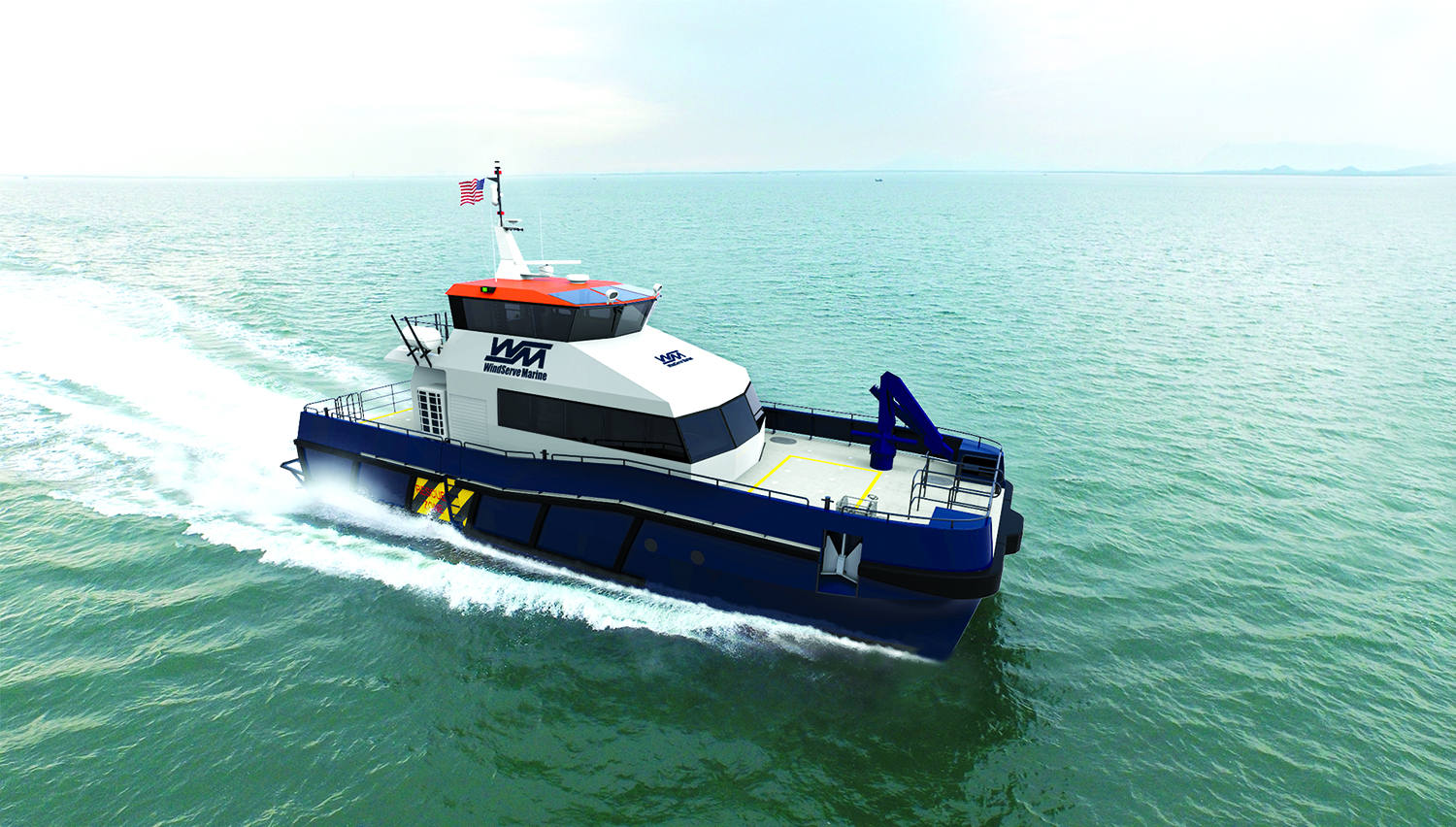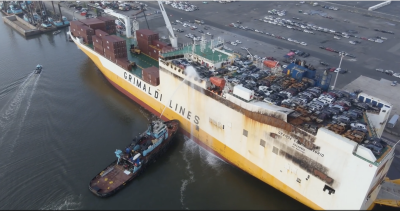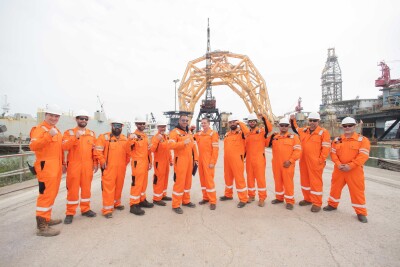Advocates for developing a U.S. offshore wind industry say they believe an impending environmental impact statement from the federal Bureau of Offshore Energy Management will allow Vineyard Wind and 14 other proposed Atlantic projects to move forward.
“We are confident that BOEM is going to meet its deadline,” said Laura Smith Morton, senior director of policy and regulatory affairs for offshore wind at the American Wind Energy Association. “They also need to issue a schedule for future projects.”
That “certainty and predictability” that more offshore turbine arrays will bring a surge of existing and newbuild U.S. flag vessels into offshore wind, said Aaron Smith, CEO and president of the Offshore Marine Service Association, during an online offshore wind webinar hosted Thursday by WorkBoat.com.
The “Offshore Wind Market and Vessel Design” session included presentations by those industry advocates, and designers James Lewis, sector lead for offshore energy at BMT Group, and Nick Prokopuk, business development manager for special ships and offshore wind at DNV GL.
The nascent U.S. industry is getting a first generation of crew transfer vessels, or CTVs, designed with lessons learned in the United Kingdom and European waters, said Lewis, whose group at BMT drew the plans for WindServe Odyssey, a CTV built for WindServe Marine at the Senesco Marine yard in North Kingston, R.I.
The will service wind developer Ørsted’s projects, starting with the Coastal Virginia Offshore Wind Project, a pilot project with Dominion Energy for two 6-megawatt turbines that went online in September.
CTVs must be “fast, comfortable and robust,” able to operate in a range of weather and sea conditions to carry technicians between shore and turbines, said Lewis. With commutes each way up to an hour or 90 minutes, those crews need to be able to put in a full day at arrival, “so these have to be quite comfortable places,” he added.
Designers are already looking ahead to wind companies’ for CTV propulsion and power using hybrid diesel electric, liquified natural gas and other alternative fuels, Lewis noted: “There’s a genuine appetite for greener and innovative designs.”
But the trick for designers is to still build around power packages that can fulfill the varied needs of CTV operations, ferrying crews and cargos, with the horsepower and torque required to push the vessels tight against turbine towers for safe crew transfer. It won’t be realistic to expect zero-emission CTVs soon because “the battery technology is not there at the moment,” said Lewis.
Similar priorities are guiding the development of U.S. flag service operation vessels, or SOVs, like the first being built by Edison Chouest for an Eversource-Ørsted partnership.
Those vessels in the 250’ to 300’ range will have a lot of focus on crew amenities, serving as both operation base and hotel for workers at sea during the operations phase of projects, said Prokopuk of DNV GL. Designers of those are also looking forward to accommodating “future fuel” options and increasing electric and battery power, he said.
One centerpiece of the SOV class is the “walk to work” capability, often shorthanded as W2W, using elevated, stabilized gangways for technicians to disembark into turbine towers.
“The end goal is that technicians feel safe and confident,” he said.
The biggest challenge in the next few years will be the supply of heavy-lift wind turbine installation vessels, or WTIVs, with only a dozen available worldwide, said Morton of AWEA. Until uncertainty is resolved over the future direction of a U.S. industry, that supply will not increase, she said.
But “the industry is ready to launch,” and AWEA wants to work with OMSA and shipbuilders for a Jones Act-compliant wind fleet, she said.
“Hopefully AWEA can help us address some of the cost disparities” that wind developers see working in the higher-cost U.S. maritime space, said Smith of OMSA.
But Smith noted the flourishing U.S. inland wind industry could never operate relying on foreign guest workers and said that should be true offshore as well. Around 15 foreign flag vessels working on U.S. wind leases now could easily be replaced by up to 50 capable U.S. vessels as needed, he said.




.png.small.400x400.png)
